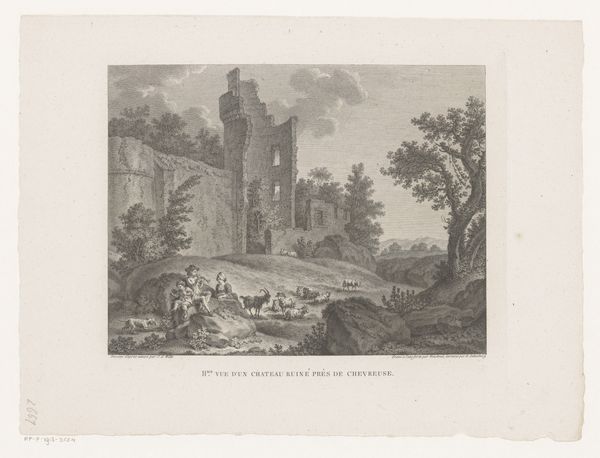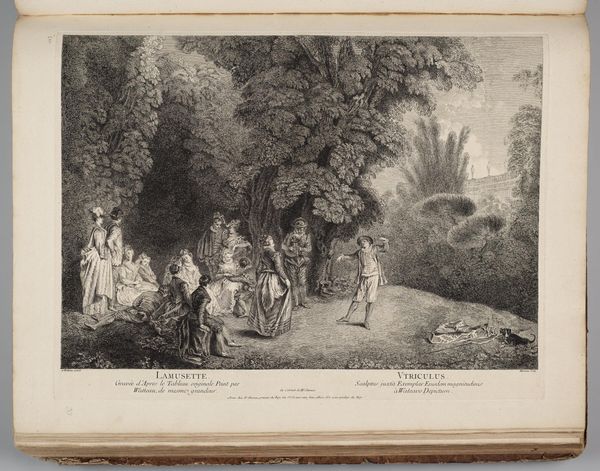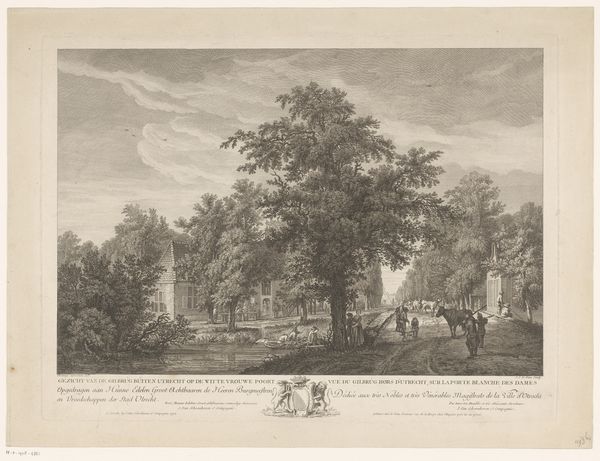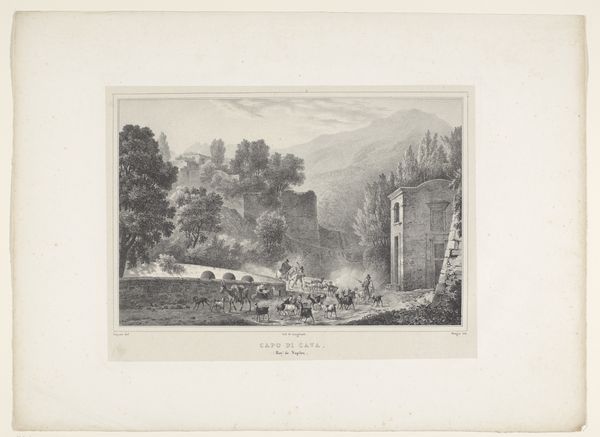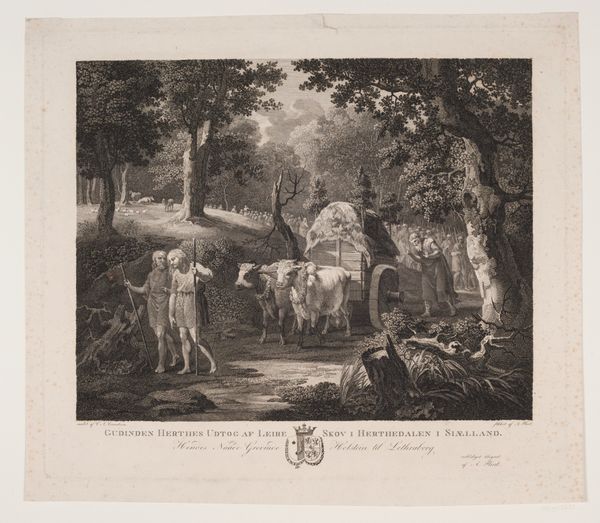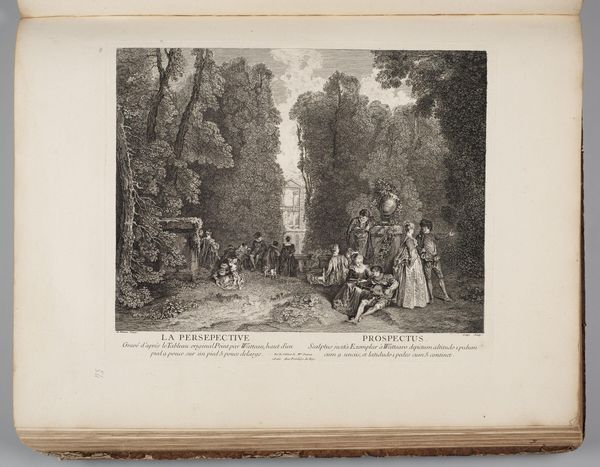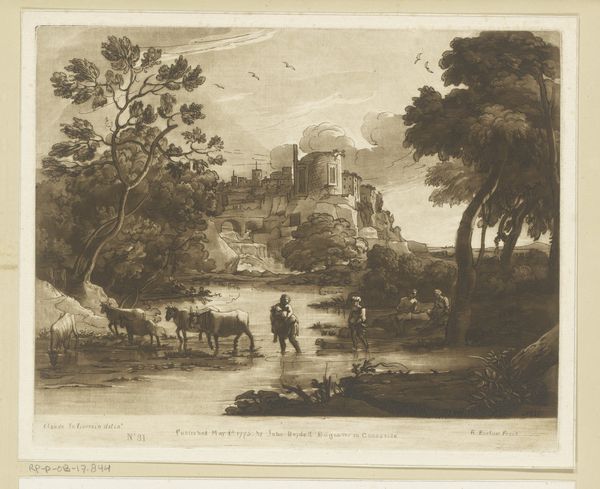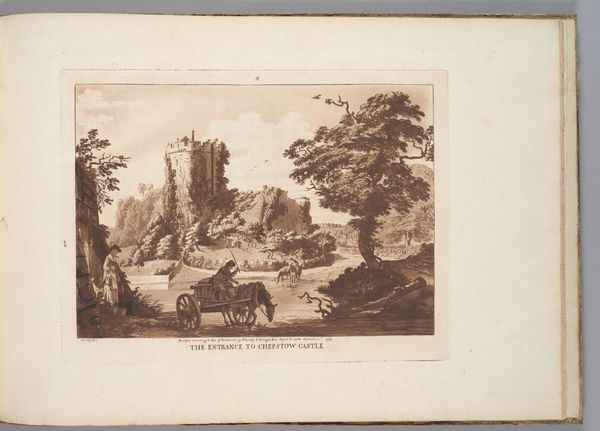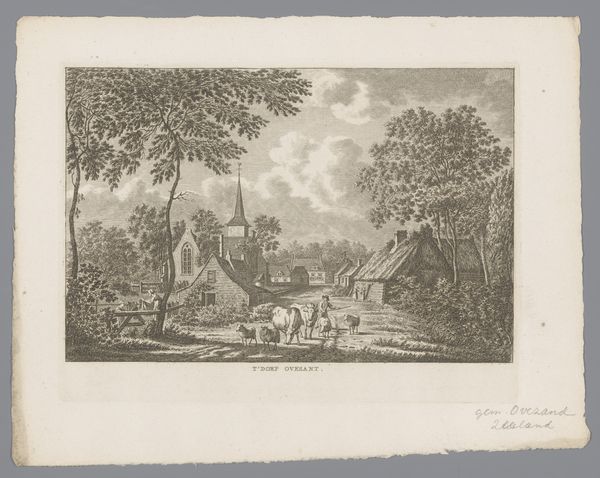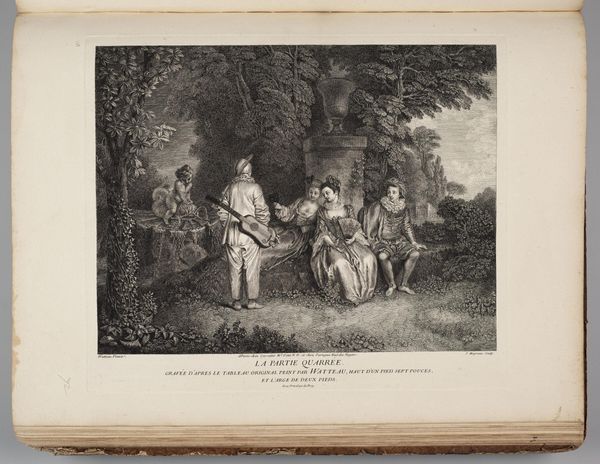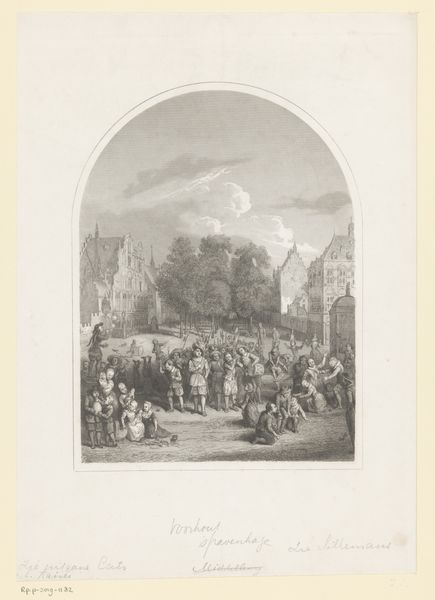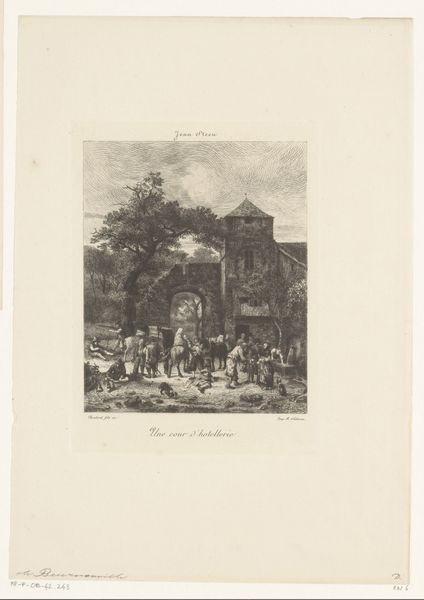
drawing, print, etching, paper, ink
#
pen and ink
#
drawing
#
neoclacissism
#
ink drawing
# print
#
etching
#
landscape
#
paper
#
ink
Dimensions: plate: 28.2 x 38 cm (11 1/8 x 14 15/16 in.) sheet: 39.1 x 49.1 cm (15 3/8 x 19 5/16 in.)
Copyright: National Gallery of Art: CC0 1.0
Editor: This is "Romitorio a Albano" by Jacob Wilhelm Mechau, created around 1785 using pen and ink, and etching. There’s something very still and composed about it, like a stage set almost. What do you see in this piece, considering its place in art history? Curator: Well, it's interesting you mention the feeling of a stage set. I think Mechau is very deliberately constructing an image here, one that aligns with the Neoclassical ideal. Think about how the 18th century rediscovered and reinterpreted classical antiquity. How does this image speak to that trend, would you say? Editor: I see the ruins as almost picturesque, softened with foliage. But I am also struck by the ordinary people placed there. They feel almost like actors placed to scale the scene, if you know what I mean. Curator: Exactly! These aren’t heroic figures from classical myth. These are contemporary figures, placed in a setting that evokes the past, but they ground it in the present. Consider the rise of the Grand Tour. Young aristocrats traveled to Italy, experiencing its classical heritage and then commissioning artworks like this one to document their travels. It's about possessing a piece of that history and displaying it back home, isn't it? Who was it intended to represent, and who might have viewed it later? Editor: So, this etching isn't just a landscape; it’s also a carefully crafted statement about wealth, education, and connection to a classical past? Curator: Precisely. And its wide circulation through printmaking democratized the consumption of these views of the past while maintaining the cultural power that underpinned its original commission. Something to consider for today, no? Editor: I had never thought about landscape art in connection with socio-political influence! Curator: Right? It is worth digging into! Art doesn't exist in a vacuum; it reflects and shapes the world around it.
Comments
No comments
Be the first to comment and join the conversation on the ultimate creative platform.
